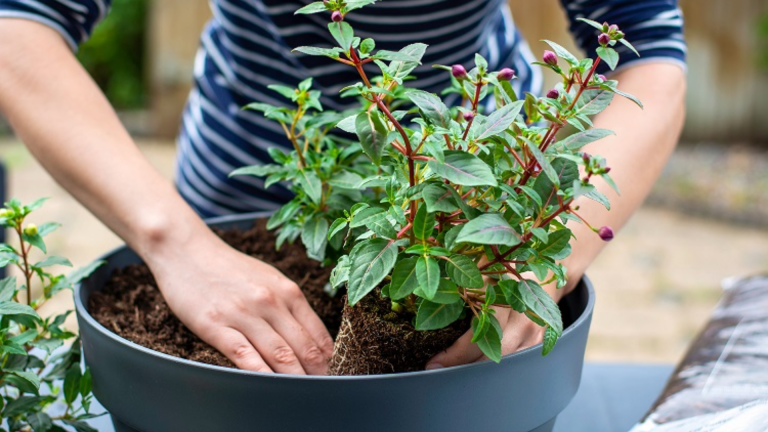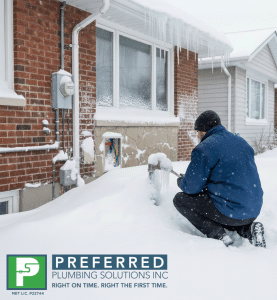Tall planters can add style and beauty to any space. They’re a great way to bring life to your home or garden. For those interested in larger-scale gardening solutions, raised garden beds offer another excellent option. Whether you’re looking to create a statement piece or add greenery to a room, tall planters offer an eye-catching way to do it.
But filling them the right way is important for your plants’ health. If you don’t fill them correctly, the plants might not grow well or look as good as they could.
This guide will show you simple steps to fill your tall planters correctly. We’ll help you avoid common mistakes, such as overwatering or using the wrong type of soil. By following these steps, you can ensure your plants thrive while also keeping your planters looking beautiful.
We’ll guide you through every step of the process, from selecting the right planter to choosing the ideal soil and ensuring proper drainage.
Why Tall Planters Need Special Care
Tall planters are deeper than regular ones. This means they need special care when filling. If you fill them wrong, it can hurt your plants.
The right materials are crucial for maintaining your plants’ health and keeping your planters looking attractive.
Proper care will ensure that your plants flourish, and your planter becomes a beautiful part of your space. Understanding the right way to fill tall planters can help you avoid common mistakes and get the best results.
Understanding the Depth of Tall Planters
Deeper planters need more soil. This provides the plant with sufficient space to grow. If the planter is not filled properly, the roots might not have enough space. Roots need space to spread out and grow strong. If they are confined or suffocated, your plant might not grow as big or as healthy as it should.
Tall planters are ideal for plants with deep roots, but that means the roots need enough soil to spread. When filling your planter, think about the type of plant you’re using. In tall planters, the depth also means considering the weight of the soil.
Too much soil can be difficult to move, especially when the planter is full of water. It’s important to find a balance between enough soil for healthy roots and a manageable weight for easy care. You want the planter to be stable, but you don’t want it to be too heavy to move when necessary.
Materials You’ll Need
To fill your tall planters correctly, you’ll need a few essential materials. These will help your plants grow strong and healthy while keeping the planter light and easy to manage. Choosing the right materials is key to creating a beautiful and worthy display.
- Potting Soil: Select a high-quality potting soil to support strong plant growth. The soil should be light and well-draining to avoid root rot. It’s best to use soil that suits the type of plant you’re growing.
- Filler Material: Filler materials, such as foam, stones, or broken pot, can help reduce the amount of soil needed. These materials fill up the bottom of the planter, making it lighter and saving you money.
- Drainage Materials: Using drainage materials is essential for preventing water from sitting at the bottom of the planter. You can use gravel, stones, or broken pots to create a drainage layer.
- Tools: Basic gardening tools will make the process easier. You’ll need a trowel for filling and packing soil, gloves for protection, and a watering can to ensure your plants get the right amount of water.
Steps to Fill Tall Planters
Filling tall planters correctly is key to keeping your plants healthy and happy. Follow these simple steps to make sure your planter has the right materials for growth. Each step is important for providing your plants with a good environment.
Step 1: Add Drainage Material
The first step is to add a drainage layer. Place a thick layer of gravel, stones, or broken pots at the bottom of the planter. This layer allows excess water to escape, which is crucial for plant health.
Without proper drainage, water can collect at the bottom, causing the roots to sit in moisture and possibly leading to root rot. Be sure to fill the bottom evenly, leaving room for the rest of the soil to settle on top of it.
Step 2: Use Filler Material
Next, fill the bottom half of the planter with filler material. You can use items like plastic bottles, foam peanuts, or even crumpled paper. These fillers occupy space and help reduce the amount of soil required.
This makes the planter lighter and less expensive to fill. Keep in mind that you should leave enough space at the top for the plant’s roots and a good amount of soil. The filler materials also aid in air circulation, ensuring the roots remain healthy and don’t suffocate.
Step 3: Add Potting Soil
Once your filler material is in place, it’s time to add potting soil. Fill the planter with quality, well-draining soil that’s suited to the type of plant you’re using. For most plants, a light and airy soil mix is best. Be sure to leave some space between the soil and the top edge of the planter.
This allows room for watering, and the soil won’t overflow when you water the plant. If you’re planting a large plant, make sure the soil is deep enough to accommodate its root system.
Step 4: Plant Your Greenery
Dig a hole in the soil where your plant will sit. Gently remove your plant from its container, being careful not to damage the roots. Place the plant in the hole and make sure it’s sitting at the correct depth. The top of the root ball should be level with the soil surface.
Once the plant is in place, carefully pack the soil around the roots to secure it in position. This helps hold the plant in position and keeps the roots in contact with the soil for good nutrient absorption. Avoid packing the soil too tightly, as this can restrict root growth and drainage.
Step 5: Water the Plant
Water the plant thoroughly after planting. This step helps settle the soil around the roots and removes any air pockets. It also ensures the roots are hydrated and begin to take hold in the new soil.
Be sure to water until you see water draining out of the bottom of the planter. This ensures that the soil is evenly moist. Keep an eye on your plant’s water needs, making sure it doesn’t dry out or become overwatered.
Tips for Maintaining Tall Planters
Taking care of tall planters is important to keep your plants healthy and thriving. Regular maintenance helps your plants grow strong and prevents problems like root rot or drying out. Here are some simple tips for keeping your tall planters in great shape.
Water regularly: Tall planters can dry out more quickly due to their size. Check the soil regularly and water when the top feels dry. Make sure you water enough so the moisture reaches the roots, but avoid overwatering. Always let the water drain freely.
Check drainage: Ensure the drainage system is working well. Tall planters are prone to holding excess water if drainage isn’t good. Make sure the drainage holes at the bottom are clear. Adding a layer of gravel or rocks can help improve water flow.
Fertilize often: Tall planters need more nutrients because they hold more soil. Fertilize your plants regularly to provide the necessary nutrients. You can use slow-release fertilizer or liquid fertilizer, depending on your plant’s needs. Follow the instructions for the best results.
Inspect roots: Over time, plants in tall planters may become root-bound. This happens when the roots get too crowded and don’t have enough space to grow. Inspect the roots every year and trim them if needed. Repotting or refreshing the soil every season can also help prevent this.
Common Problems with Tall Planters
Filling tall planters can be tricky. The following are the common problems with tall planters. With Proper care, you can avoid these common mistakes and keep your plants healthy.
- Too much soil: It can make the planter heavy and costly. You don’t need to fill the entire planter with soil. Instead, use less soil and add fillers like stones or foam.
- Using filler materials: It can be a smart solution in tall planters. By filling the bottom with stones, foam, or broken pots, you reduce the amount of soil needed.
- Poor drainage: It is a common problem with tall planters. If water is trapped in the planter, it can drown the plant’s roots. To prevent this, ensure your planter has drainage holes.
- Wrong soil: It can also harm your plants. Different plants require different types of soil, with some needing fast-draining soil and others requiring soil that maintains moisture.
Conclusion
Filling tall planters is easy once you have the right knowledge and materials. In this blog, we walk you through the essential steps to help you fill your planters properly, from adding drainage material to choosing the right soil and proper plant care.
By using fillers and ensuring proper drainage, you can save money and prevent common issues, such as root rot. We also covered the importance of watering, fertilizing, and checking the roots to ensure healthy plant growth.
With the right care, your tall planters will thrive, adding beauty to any space. Now that you know the simple steps to follow, you can confidently fill your tall planters and watch your plants grow strong and healthy for years to come.




















